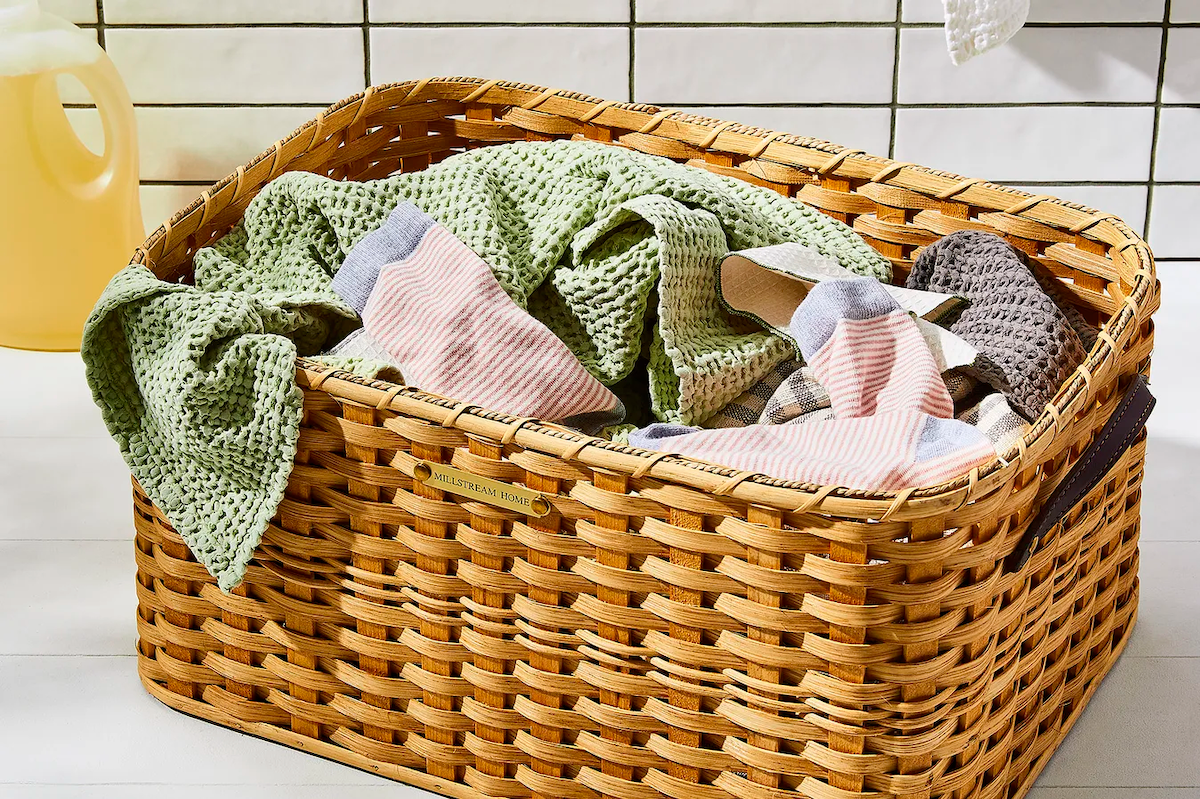I don't claim to be a laundry expert, but I think at this point in my life I mostly have the chore figured out . . . right? Maybe not. The other day I was lamenting that one of my shirts came out of the washing machine with a snag in it, and my mom asked if I left any zippers undone. It turns out you're supposed to close any zippers before putting clothing in the wash — otherwise, the metal teeth can grab onto other fabrics. Maybe it's just a common sense thing, but I truly never thought of it.
The whole situation got me thinking: What other laundry mistakes am I making? I reached out to a few experts to ask what laundry mistakes they often see most often, and it turns out there are quite a few things that I didn't know about.
Using too much detergent
I'll be the first to admit that I don't measure laundry detergent — not precisely, anyway. However, if you eyeball it like I do, you're probably using too much soap, which isn't good for your clothes or your washing machine.
When you use too much laundry detergent, your washer won't be able to rinse it all out of your clothing, which can leave your clothes feeling stiff and starchy. It can also cause extra wear and tear on the appliance itself, as the motor has to work extra hard to get all the suds out of your clothes. Bottom line? You (and I) should definitely be measuring more carefully — 1 tablespoon of detergent is enough for standard-size loads.
Not testing for hard water
Do you know if your home has hard water? Me neither. However, for the sake of both your laundry and washing machine, it's worth buying a hard water test to find out if you have too-high levels of dissolved calcium and magnesium.
"Untreated hard water can leave mineral deposits on your clothes that dull their color and eat at their quality over time," explains Tim Dunphy, Water Expert at Leaf Home. "Homeowners can — and should — take preventative measures by using a water softener to preserve their belongings."
Over time, hard water can also cause problems with your appliances: "Hard water also decays pipes and adds wear and tear to your washer," says Dunphy. "Using a water softener improves the efficiency of your laundry appliances and minimizes the need for repair and replacement."
Using dryer sheets
It's no secret that any type of fabric softener, including dryer sheets, can make your towels less absorbent, but it turns out they're not great for your dryer, either. "Dryer sheets leave a waxy buildup on the lint screen, leading to possible fires. Instead, look to use dryer wools or balls," explains Scott Thomas, Director of Systems for Dryer Vent Wizard. "Dryer balls help reduce drying time and energy cost. They are chemical-free and help limit static cling and soften clothes."
Not willing to give up your favorite dryer sheets? (I will admit I love the Bounce Pet Hair ones.) Make sure you're cleaning your lint screen thoroughly to get rid of the residue: "If you use dryer sheets, it's essential to remove lint for every load, wash the lint screen with hot soapy water, and use an old toothbrush every three to six months for a deep clean," says Thomas.
Drying clothes with elastic bands
I recently bought a pair of fairly expensive underwear, and I was super frustrated when the elastic waist band became misshapen after just a few laundry cycles. It turns out that you really shouldn't be drying clothing with elastic bands, especially on a high temperature setting. The high heat can cause the elastic to melt or become brittle, significantly reducing its lifespan.
Instead, it's best to air dry any items with elastic bands — a clothes drying rack will be your best friend here. If that's not possible, you should at least put your dryer on a low temperature setting.
Not using color catchers in mixed loads
I recently explained that I've stopped sorting laundry, since it doesn't seem to make a difference, but that doesn't mean you should throw all caution to the wind. When washing whites and colors together, you'll want to use cold water, and experts recommend another level of protection, too. "You should try at least to keep your whites from your colors, and at a minimum, use color catchers," recommends Patric Richarson of the Laundry Evangelist.
Color catcher sheets are inexpensive, and all you have to do is put one into your washing machine with each load of laundry. The sheet will capture any dye that comes off your clothing, preventing it from staining other pieces.




Shares